Tominé Reservoir
The Tominé Reservoir (Spanish: Embalse del Tominé) is a reservoir in northern Cundinamarca, Colombia about 60 kilometres (37 mi) north of Bogotá. It is 18 kilometres (11 mi) long and 4 kilometres (2.5 mi) wide, and when completely filled reaches a maximum depth of 38 metres (125 ft). Its objectives are to control water levels for hydroelectric plants in the region and supply drinking water to Bogotá. It is adjacent to the municipalities of Sesquilé and Guatavita.
| Tominé Reservoir | |
|---|---|
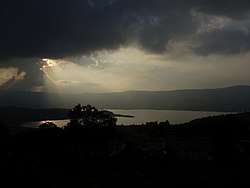 Sunrays over Tominé Reservoir seen from Guatavita | |
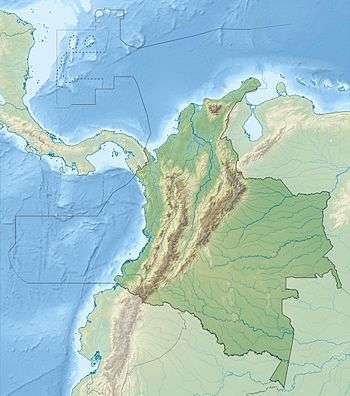 Tominé Reservoir | |
| Location | Guatavita & Sesquilé Cundinamarca |
| Coordinates | 4°57′51″N 73°49′51″W |
| Type | Artificial lake |
| Primary inflows | Bogotá River |
| Primary outflows | Bogotá River |
| Basin countries | |
| Max. length | 18 km (11 mi) |
| Max. width | 4 km (2.5 mi) |
| Surface area | 72 km2 (28 sq mi) |
| Max. depth | 38 m (125 ft) |
| Water volume | 690 hm3 (2.4×1010 cu ft) |
| Surface elevation | 2,581 m (8,468 ft)[1] |
| Islands | Various |
History
The reservoir was completed in 1967. The town of Guatavita was intentionally flooded for the construction and functioning of the reservoir. Guatavita was rebuilt on higher grounds. Today, Tominé hosts water sports and other water-related events. The reservoir, the biggest on the Bogotá savanna,[2] is seven times larger than the Neusa and Sisga Reservoirs.[3] At lowstand lake levels, the top of the tower of the old church of Guatavita is visible above the water level.
Gallery
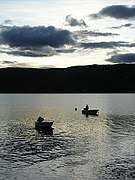 Fishing boats
Fishing boats
September 2008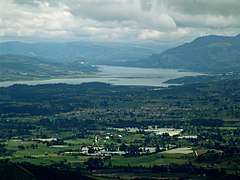 View of Tomine Reservoir
View of Tomine Reservoir
December 2008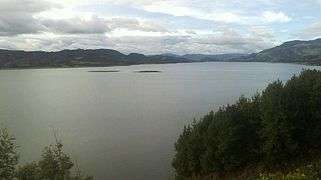 Tominé Reservoir
Tominé Reservoir
June 2013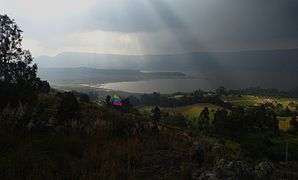 View of Tominé Reservoir
View of Tominé Reservoir
February 2017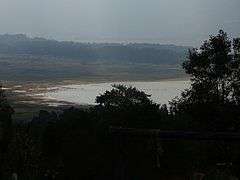 Lowstand of Tominé Reservoir
Lowstand of Tominé Reservoir
February 2017
Panoramas
See also
References
- Google Maps Elevation Finder
- (in Spanish) Embalse de Tominé
- (in Spanish) CAR ordena medidas para descontaminar el embalse de Tominé
External links
| Wikimedia Commons has media related to Embalse de Tominé. |
- (in Spanish) Cundinamarca department official website
- (in Spanish) Guatavita - Universidad de los Andes

